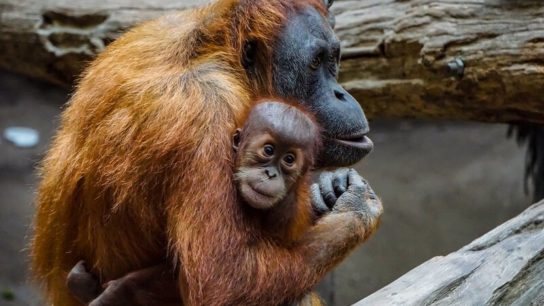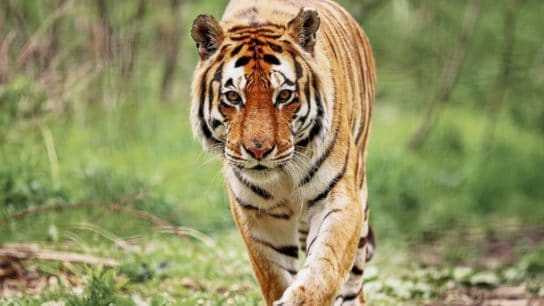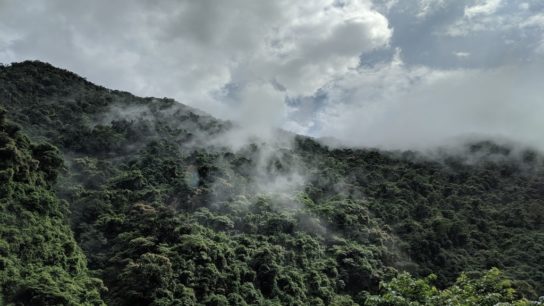Socotra Island, at the crossroads of the Gulf of Aden and the Arabian Sea, is celebrated for its extraordinary biodiversity, earning it the nickname “Galápagos of the Indian Ocean.” Its isolated environment fosters a unique array of endemic species, making it a remarkable showcase of nature’s diversity and adaptability.
—
The vast expanse of land, surrounded by azure waters, lies where the Middle East meets the Indian Ocean at the edge of the African continent. One of the world’s largest and most beautiful shore dunes, echoing the mainland deserts, can be seen from above, alongside breathtaking lagoons that wash the coastline.
The magnificent Detwah Lagoon, with its crystal-clear blue waters, unfolds like the gates of the island. Moving over the white sand beaches of Qalansiyah, where pristine stretches of sand meet the turquoise sea, reveals a serene and picturesque landscape that encapsulates the essence of Socotra’s untouched beauty.
Continuing along the coastline, the rugged cliffs and rocky outcrops of Homhil Reserve reveal hidden pools and lush greenery, offering a stark contrast to the surrounding arid landscape. Inland, the Hajhir Mountains rise majestically, their peaks often shrouded in mist, creating a mystical atmosphere.
These mountains are home to unique flora and fauna, such as the umbrella-like, fossil-looking dragon blood trees, reminiscent of the prehistoric realms of our planet. Nearby, their miniature bonsai-like counterparts, the desert roses and cucumber trees, adorn the island’s surface like obese dwarfs, adding to its unique landscape.

Further exploration reveals the Diksam Plateau’s otherworldly panorama, featuring surreal limestone formations and a range of endemic plant species that create an alien-like environment. These distinctive features, found nowhere else on Earth, add to the island’s profound allure and mystery for naturalists.
The combination of Socotra’s extraordinary natural wonders and the rich cultural heritage of the Soqotri people, who have harmoniously coexisted with the island’s ecosystems for centuries, makes Socotra a captivating and unforgettable destination.
The Galápagos of the Indian Ocean
When we think of insular island ecosystems, the Galapagos Islands or New Zealand usually come to mind first. However, there are many untouched sites on Earth where amazing lifeforms emerge. One of these hidden gems is Socotra Island, located right where the Gulf of Aden meets the Arabian Sea in the northwest Indian Ocean.
Socotra, or Saqatri, is the largest of the four islands in the Socotra Archipelago. Located just 60 miles from the Horn of Africa, it is a sovereign part of the Republic of Yemen. Despite the complex political landscape, with the United Arab Emirates (UAE) engaging both economically and militarily, its most outstanding feature is one of the world’s most biodiverse endemic ecosystems, which have earned it the name “Galápagos of the Indian Ocean.”
Unique Flora
A substantial part of Socotra’s diverse flora and fauna is found nowhere else in the world. The island serves as a natural sanctuary, with 37% of its plant species, 90% of its reptile species, and 95% of its terrestrial mollusks unique to the island. The island’s endemic flora is its hallmark, with a wide variety of species thriving in diverse ecosystems, from rainy wetlands to arid desert-like areas. Socotra and its three small outlying islands have the fourth-highest number of endemic plant species per square mile in the world, after the Seychelles, New Caledonia, and Hawaii.
The majestic Dracaena cinnabari, or dragon blood tree, is the island’s most iconic megaflora. It boasts a trunk with thick, twisted branches that spread out into a distinctive umbrella-shaped canopy. When sliced open, it produces a deep red resin known as dragon’s blood.
Another botanical marvel is the small tree species Adenium socotranum, known as the red desert rose. It features a thick trunk and a few short, sparsely vegetated branches at the top, with its form varying due to wind patterns and local conditions on the island. Some of these trees can reach up to 5 meters (16.4 feet) in height. Despite its fancy appearance and beautiful flowers, the plant is poisonous due to cardiotoxins in all its parts.
Caralluma socotrana, a quirky succulent, is also an endemic plant species that is common in Socotra. It is one of the most unique species in the genus, with symmetrically jointed stems that resemble pale green coral. However, its distinctiveness is highlighted by its unique, almost glistening, vermilion flowers.
Diverse Wildlife
When talking about wildlife, we must begin with reptiles. Their variety is immense. Studies have recorded around 30 types of them in Socotra, including a rich number of lizards such as geckos, skinks, and chameleons that are found exclusively on the island, and new species being discovered every year. Of particular note is the rare Socotran chameleon (Chamaeleo monachus), which can only be seen in a few locations on the island.
The avifauna of Socotra is equally captivating. The archipelago is home to more than 200 bird species, about ten of which are endemic, such as the rarest Socotra Bunting (Emberiza socotrana), Socotra scops owl (Otus socotranus), Socotra sunbird (Chalcomitra balfouri), Socotra Buzzard (Buteo socotraensis) and others. Socotra has a special responsibility for their protection. A prominent part of the bird populations is the Egyptian vulture and Socotra cormorant.
The island’s microfauna is highly endemic; over 1,560 taxa of insects, including more than 660 species (42%), are endemic. Notable examples include the Socotran emperor butterfly (Charaxes balfouri) and the beautiful damselfly Socotra bluet. Island’s molluscs also exhibit exceptional endemism with 100 indigenous species, 98% of which are found only on the island. Freshwater crab species (Socotrapotamon socotrensis) are commonly found in the island’s streams.

Marine wildlife is equally astonishing, with 253 species of stony (five of which are endemic) and soft corals, at least 733 species of coastal fish, and 300 species of crabs, lobsters, and shrimp. The Socotra Archipelago is also one of the most important nesting sites of loggerhead turtles in the region. Despite extensive research programs, a significant portion of Socotra’s marine invertebrate diversity remains unknown.
Conservation Strategies
Socotra Island Nature Sanctuary has been protected through a series of designations and conservation efforts. Since 2000, the archipelago has been recognized as a network of protected areas, gaining UNESCO Man and Biosphere Reserve status in 2003, Ramsar Site designation in 2007 on wetlands, and UNESCO Natural World Heritage Site status in 2008. These designations, initiated by the Yemeni government with the support of international partners, underscore the island’s rich and vulnerable ecosystems.
The Socotra Conservation Zoning Plan, implemented in 2000, delineates various protection zones to safeguard the island’s diverse habitats and species. This plan categorizes areas into national parks, nature reserves, and protected zones, each with specific regulations aimed at conserving their unique biological and ecological characteristics.

The UNESCO Man and Biosphere (MAB) programme plays a key role in promoting sustainable development and conservation. It fosters collaboration and knowledge exchange among its global network of biosphere reserves, including Socotra. The MAB programme aims to balance human needs with environmental protection by encouraging best practices in conservation, promoting scientific research, and supporting community involvement. Its objectives align with the UN Sustainable Development Goals (SDGs), particularly those related to life on land (SDG 15), life below water (SDG 14), sustainable cities and communities (SDG 11), and climate action (SDG 13).
Efforts to enhance conservation on Socotra also involve local communities, who have long been stewards of the island’s natural resources. Engaging local stakeholders in conservation activities helps build capacity and ensures that traditional knowledge and practices contribute to sustainable management. Additionally, international organizations and NGOs are actively involved in research, capacity building, and advocacy to support conservation initiatives on the island.
Despite these protections, recent studies have highlighted the increasing vulnerability of Socotra’s ecosystems due to climate change, invasive species, and unsustainable practices. For instance, rising temperatures and altered precipitation patterns are affecting the island’s biodiversity, while invasive species pose threats to native species and ecosystems.
This story is funded by readers like you
Our non-profit newsroom provides climate coverage free of charge and advertising. Your one-off or monthly donations play a crucial role in supporting our operations, expanding our reach, and maintaining our editorial independence.
About EO | Mission Statement | Impact & Reach | Write for us
How can I contribute to a more sustainable planet?
- 🗳️ Vote for Climate Action: Exercise your democratic rights by supporting candidates and policies that prioritize climate change mitigation and environmental protection. Stay informed with Earth.Org’s election coverage.
- 👣 Reduce Your Carbon Footprint: Make conscious choices to reduce your carbon footprint. Opt for renewable energy sources, conserve energy at home, use public transportation or carpool, and embrace sustainable practices like recycling and composting.
- 💰 Support Environmental Organizations: Join forces with organizations like Earth.Org and its NGO partners, dedicated to educating the public on environmental issues and solutions, supporting conservation efforts, holding those responsible accountable, and advocating for effective environmental solutions. Your support can amplify their efforts and drive positive change.
- 🌱 Embrace Sustainable Habits: Make sustainable choices in your everyday life. Reduce single-use plastics, choose eco-friendly products, prioritize a plant-based diet and reduce meat consumption, and opt for sustainable fashion and transportation. Small changes can have a big impact.
- 💬 Be Vocal, Engage and Educate Others: Spread awareness about the climate crisis and the importance of environmental stewardship. Engage in conversations, share information, and inspire others to take action. Together, we can create a global movement for a sustainable future.
- 🪧 Stand with Climate Activists: Show your support for activists on the frontlines of climate action. Attend peaceful protests, rallies, and marches, or join online campaigns to raise awareness and demand policy changes. By amplifying their voices, you contribute to building a stronger movement for climate justice and a sustainable future.
For more actionable steps, visit our ‘What Can I do?‘ page.














